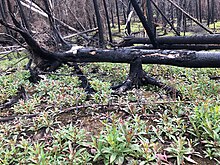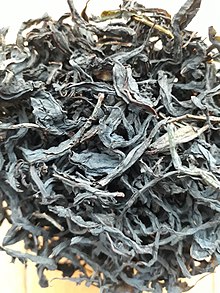
A wildflower is a flower that grows in the wild, meaning it was not intentionally seeded or planted. The term implies that the plant is neither a hybrid nor a selected cultivar that is any different from the native plant, even if it is growing where it would not naturally be found. The term can refer to the whole plant, even when not in bloom, and not just the flower.
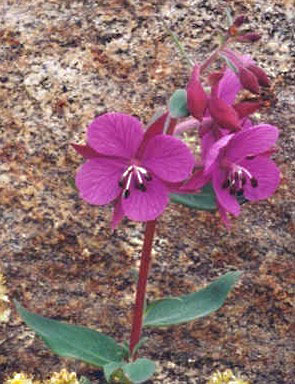
The Onagraceae are a family of flowering plants known as the willowherb family or evening primrose family. They include about 650 species of herbs, shrubs, and trees in 17 genera. The family is widespread, occurring on every continent from boreal to tropical regions.

Epilobium is a genus of flowering plants in the family Onagraceae, containing about 197 species. The genus has a worldwide distribution. It is most prevalent in the subarctic, temperate and subantarctic regions, whereas in the subtropics and tropics Epilobium species are restricted to the cool montane biomes, such as the New Guinea Highlands.

Plantago major, the broadleaf plantain, white man's footprint, waybread, or greater plantain, is a species of flowering plant in the plantain family Plantaginaceae. The plant is native to Eurasia.
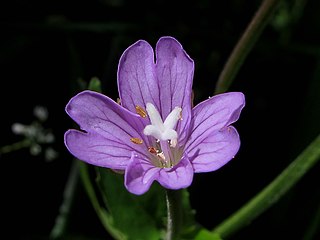
Epilobium montanum or Broad-leaved Willowherb is a species of flowering plant in the willowherb family Onagraceae.

Chamaenerion is a genus of flowering plants in the family Onagraceae. It has sometimes been included in the genus Epilobium. Members of the genus may be called willowherbs, or fireweeds, based on a common name used for C. angustifolium. They are upright herbaceous perennials, growing from a woody base or from rhizomes, with racemes of usually purple to pink flowers. All species are found in the northern hemisphere. Most occur in moist habitats; C. angustifolium is the exception, favouring disturbed ground.

Epilobium ciliatum, known by the common names fringed willowherb, American willowherb, slender willow herb, and northern willow herb is a species of flowering plant in the willowherb family Onagraceae. This species is native to much of North America, southern South America, and East Asia. It is an introduced species in much of Eurasia and Australia.
Fireweed is a perennial herbaceous plant in the willowherb family (Onagraceae).

Chamaenerion latifolium is a species of flowering plant in the evening primrose family known by the English common names dwarf fireweed and river beauty willowherb. It has a circumboreal distribution, appearing throughout the northern regions of the Northern Hemisphere, including subarctic and Arctic areas such as snowmelt-flooded gravel bars and talus, in a wide range of elevations. This is a perennial herb growing in clumps of leaves variable in size, shape, and texture above a woody caudex. The leaves are 1 to 10 centimeters long, lance-shaped to oval, pointed or rounded at the tips, and hairy to hairless and waxy. The inflorescence is a rough-haired raceme of nodding flowers with bright to deep pink, and occasionally white, petals up to 3 centimeters long. Behind the opened petals are pointed sepals. The fruit is an elongated capsule which may exceed 10 centimeters in length.

Epilobium oreganum is an uncommon species of flowering plant in the evening primrose family known by the common names Grants Pass willowherb and Oregon fireweed. It is native to southern Oregon and northern California, where it is historically known mostly from the Klamath Mountains. It is currently confirmed to exist only in Josephine County, Oregon, and Trinity County, California, where it grows in boggy areas on serpentine soils. It is a perennial herb growing up to a meter in height with thin, hairless stems. The red-veined leaves are oval to lance-shaped and up to 9 centimeters long. The inflorescence bears flowers with pink petals just over a centimeter long and a protruding pistil. The fruit is a hairy, glandular capsule up to 4.5 centimeters long.

Epilobium siskiyouense is a rare species of flowering plant in the evening primrose family known by the common names Siskiyou willowherb and Siskiyou fireweed.

Mompha epilobiella is a moth in the family Momphidae found in Europe and North America.
British NVC community OV27 is one of the open habitat communities in the British National Vegetation Classification system. It is one of four tall-herb weed communities.

Mompha langiella is a moth of the family Momphidae. It is found in most of Europe, except parts of the Balkan Peninsula and the Mediterranean islands.
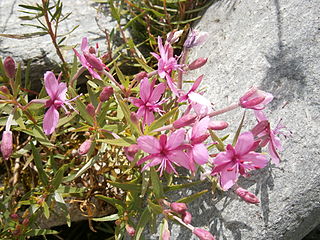
Chamaenerion fleischeri, formerly Epilobium fleischeri, commonly known as Alpine willowherb, is a herbaceous perennial plant of the family Onagraceae.

Epilobium parviflorum, commonly known as the hoary willowherb or smallflower hairy willowherb, is a herbaceous perennial plant of the family Onagraceae.
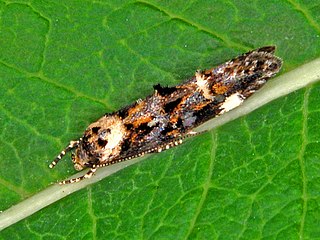
Mompha conturbatella, also known as the fireweed mompha moth, is a moth in the family Momphidae found in Asia, Europe and North America. It was first described by Jacob Hübner in 1819.
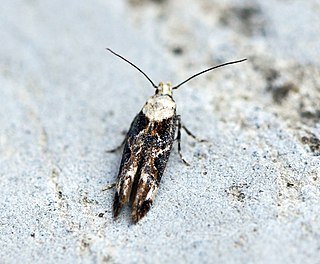
Mompha divisella is a moth in the family Momphidae. It is found from southern Scandinavia to the Caucasus and central Asia.
Elymus macrourus is a species of grass known by the common names tufted wheatgrass and thickspike wildrye. It is native to northwestern North America in Alaska, Yukon, and the Northwest Territories. It is also present in eastern Siberia.





